#FD Lenses
Explore tagged Tumblr posts
Video
St Nicholas Market by [email protected] Via Flickr: Canon A-1 Focal Length: 135mm ISO: 400 Film: Portra 400
#Canon#Canon A1#35mm Film#Film#Film Photography#Photo#Flickr#Canon FD#FD#FD Lenses#Vintage#Analogue#Vintage Lenses#Colour Film#Vintage Canon Cameras#Canon Cameras#Kodak#Portra#Kodak Portra#Kodak Portra 400#Portrait#135mm#FD 135mm F/2.8#Telephoto#Bristol#Covered Market#City#candid#candid portrait#Sad
1 note
·
View note
Text
I didn't draw for like.. Two months? And then...

Daniel, wake up! Daniel, they are drawing me. No, you don't understand, beloved, this little artwork is a disgrace! I am much more elegant in reality. Don't laugh, Daniel, it is a matter of grave importance!
#it literally consumed my brain#generally i can't draw characters but in this fd i can't stop drawing characters#it's from the infamous photo of assad in lenses#interview with the vampire#armand iwtv#amc iwtv#assad zaman#artwork#art#iwtv art#armand art
29 notes
·
View notes
Text
youtube
44°58'23.5"N 6°03'54.8"E
youtube/oftwolands
www.oftwolands.com
#of two lands#filmmaking#blackmagic design#bmpcc#video#bmcc6k#vintage#vintage lenses#cinematographer#cinematography#review#gear#camera gear#vintage lens#helios#helios 44 2#contax zeiss#canon fd#filmmaker#cinema camera 6k#blackmagic#youtube#lenses#florent piovesan#Youtube
12 notes
·
View notes
Text
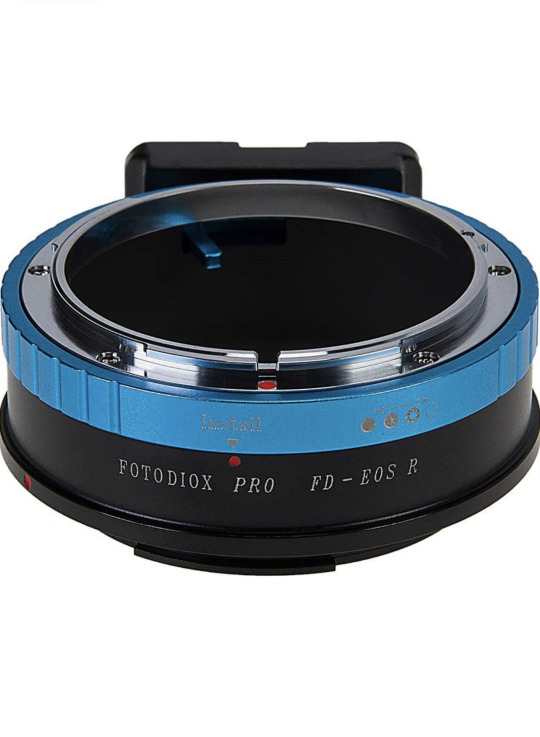
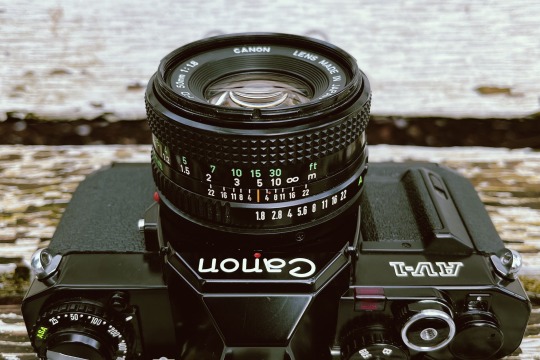

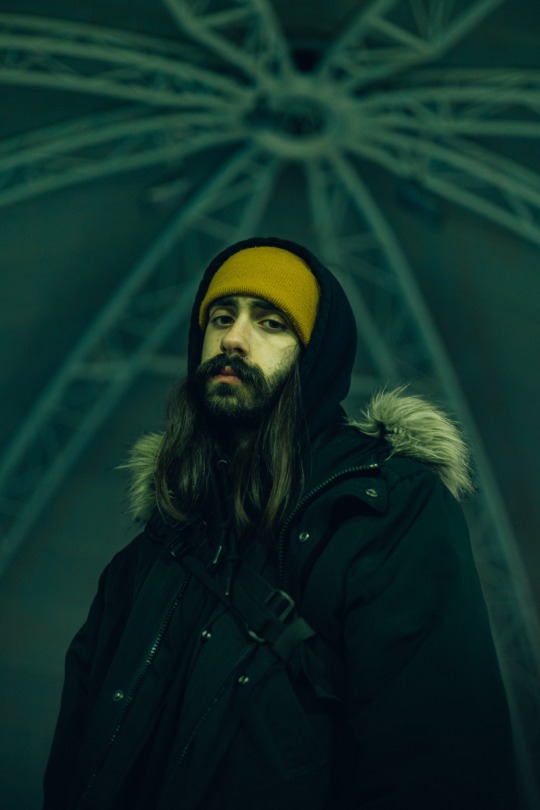
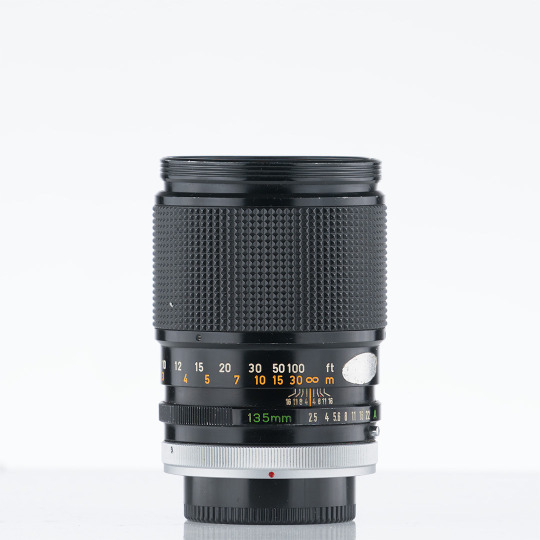
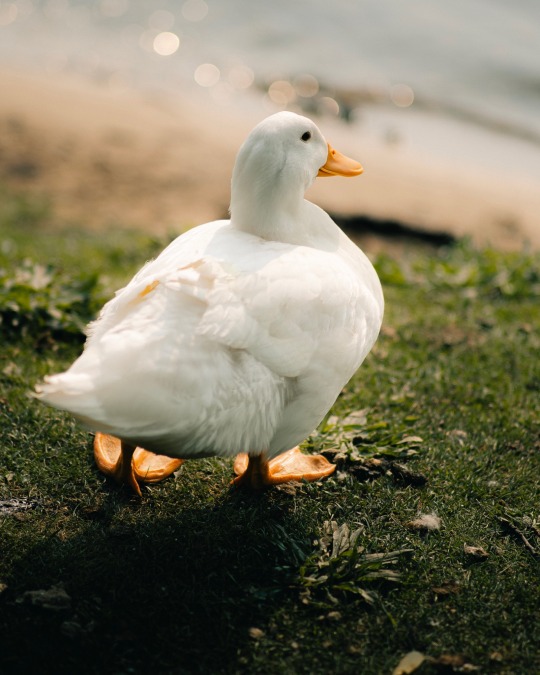
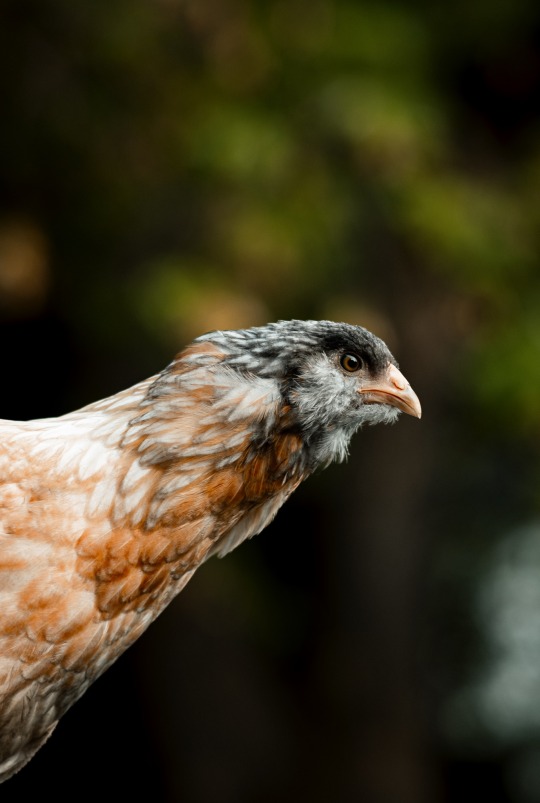
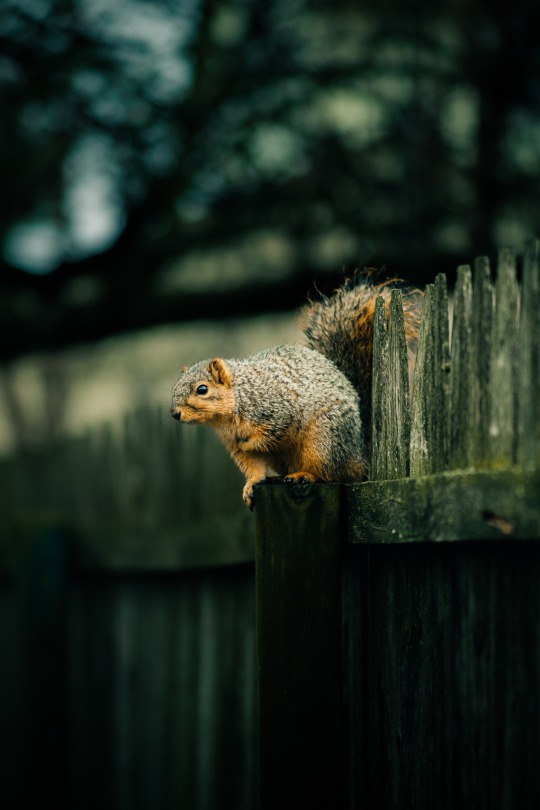
So this Christmas my girlfriend got me this cool adapter that lets me adapt Canon FD lenses to my Canon EOS R. So basically I can use vintage film lenses on my mirrorless. Honestly I’m in love with vintage glass, I have only a hand full of them, but I never spent more than $50 on any lens and the images that come out are amazing. I had a couple of my photography buddies completely blown away that I’m using vintage lenses. Here are two of my favorites, my 50mm f1.8 and my 135mm f2.5. Both super clean, take amazing photos, the bokeh is butter and you can’t tell if this is a modern lens or a vintage lens. My 50mm is a perfect for not only portraits, but great for street photography. My 135mm is perfect for nature and wildlife photography. Not something I do a lot of, but would definitely love to do more of it, but mainly because I own a 135mm for it. I hope to get a 300mm one day as well. Now there is some cons and pros for using vintage lenses. Pros are, not as expensive as modern lenses, like I said I never spent more than $50 on a lens. There are some great ebay deals out there, there are some very expensive FD lenses, that run in the $1,000’s, but those were for making movies. You’re not buying cheap plastic, all these lenses are well made and made of metal. You don’t have to use Canon name brand lenses, as long as it has the FD mount, there are other brands out there that are nice in price and still have the same image quality. Now for the Cons, all the lenses will have to be manual focus, now that is pretty obvious to a lot of photographers, but this is something a lot of photographers will not like and will miss autofocus. Taking videos, there is no auto stabilization, so you will need a gimbal and you will have to manually focus as recording. It can be done and I’m sure that will not bother others, you can buy an adapter with built in autofocus, but that’s $300 for that. Another thing is shopping for the right lens, now I normally recommend ebay, just make sure you read the description. Since these lenses are old, they can develop dust in the glass and fungus. Also I have read where some actually have mold in them, but message the seller if they’re description is vague on the lens. Another con is these will make your weather sealed or weather proof camera not weather sealed or proof. I definitely learned that the hard way one photoshoot. I got a little moisture on my sensor one day when it was raining, thinking I would he good because I’ve shot before in the rain with my RF lens and was completely fine. Now for the last con, some of these lenses are heavy! My 135mm is super heavy, because they are made a of metal and not the cheap plastic you spend $1,000’s of dollars on. So trying hold focus on hold the lens is a sometimes a struggle. I linked the adapter up top of this post and they sell other adapters for other cameras as well.
#photography#canon photography#flint michigan#street photography#canon eos r#photography by#midwest#50mm#vintage lenses#canon fd
4 notes
·
View notes
Text
Gray
#BOLEX#ARRIFLEX#16MM FILM#KODAK#MOTION PICTURE FILM#ROCKAWAY BEACH#EDITORIAL VIDEO#EDITORIAL#MOTION#RED KOMODO#CANON FD#VINTAGE LENSES
1 note
·
View note
Text
ok heres my big list of stuff im selling, if ur near bawston hmu for details/pics/whatever
Nikon D3300 (digital) w 18-55mm nikor lens & battery - $220 Ansco Automatik TLR - $150 Ansco B2 Speedex - $30 (tested, works but light leak) Untested Polaroid onestep plus w/ Q flash - $20 or free w/ one of the expensive things Untested Minox 35GT (35mm) - $80 Pentax SMC 67 MF 135mm f/4 lens - $130 Some canon FD lenses - HMU i gotta dig em out plus some music stuff: Luna OCL TAT CDR acoustic electric guitar - $150 DBA Rooms reverb pedal - $275 Critter & Guitari Organelle (2016-2019 dark blue) - $350
16 notes
·
View notes
Text

"contact lenses".... wanna see more? Check out my premium FD gallery on Deviant Art with 100 more FD exclusive hypnopics https://www.deviantart.com/cantfindadecentalias/shop
6 notes
·
View notes
Video
youtube
For my third “A Step Greener” video I focused in on the Bank I use and what impact that has on the environment, spoiler it is pretty bad. Which is why I decided to change to a building society. For the video itself I used my new Panasonic S5 as my B-Cam. I quite like the image from it and have been curiose about trying a full frame camera for video as I have been working with mostly MFT for the last five years. I really like the options it offers on the wide end of the focal range and having good image stabilisation is great.
I have a couple older canon FD lenses that I have been wanting to try out so I decided to use them for this video. I like the image from them but the 50mm f1.4 does render quite a bit sharper images when put next to the 28mm f2.8. And unfortunately for this set up I ended up putting the 50mm on the S5′s whos sensor oversamples a 6k image down to 4k so you get a very sharp initial image. Then combined that with the faster lenses and there is some clear difference between the two. But it is good to be reminded of these things.
On this video I also used overlays for the first time in this series. With the nature of banks and their investments there wasn’t much opportunity for me to film B-Roll footage myself I thought this was a good alternative and overall I am quite happy with how they turned out.


I do think that my performance could be a bit more energetic and hope to move more behind the camera instead of in front of it for my next project once I’ve completed this series.
Also have to give Natalie a big shoot out for al the help she has given me on this project. Thanks for the help honey.
5 notes
·
View notes
Text
Canon Compatible: the RF mount can accept adapted EF mount lenses. The M mount can accept adapted RF and EF lenses. RF lenses cannot be adapted to other mounts without losing infinity focus. Older FD lenses can be adapted to RF and M mount bodies but with no automatic functions.
Within these limitations, -s indicates compatibility with only crop sensors. For example, a crop body EF mount camera can accept EF and EF-s lenses, but a full frame EF mount camera can only accept EF lenses.
Canon compliant
Canon compatible
Canon complacent
Canon comparable
Canon compulsive
Canon competitive
Canon competent
Canon compassionate
Canon complementary
Canon comprehensible
Canon companionable
Canon compressible
Canon complexifying
Canon compensatory
Canon complicit
8K notes
·
View notes
Text
001: Setting the Context
This is a space that I will use as a learning journal of sorts regarding my photography. The idea is to etch down any learnt lessons and keep a perpetual tab on any developing ideas or musings, rather than leaving it all to be ephemeral. Hopefully, after some time, any patterns in my thinking or methods --be it good or bad -- that would usually be missed, are here and made apparent to me.
Here is where I'm at, at this very moment.
I shoot stills in both film and digital.
With film, I shoot 35mm and 120, most of my work is made with 35mm SLRs consisting of Canon nFD and assorted but mostly Takumar M42 lenses. I started shooting film with a Canon T70, then an FTb and now an A-1 and T90, but with the FD lenses becoming expensive, I found out that I could adapt M42 lenses to my FD cameras, and started down that path. Nearly two years later I have a handful of Super-Multi-Coated Takumars with coverage from wide angle to short tele, and some of the more popular, relatively unexotic USSR and East German lenses, such the Helios, MIR, Industar, Trioplan 50mm and Pancolar. Having gotten sick of the often inaccurate exposure due to my FD cameras meters not being able to accurately meter stopped down at small apertures, I sourced a Praktica MTL5B to use my M42 lenses with natively, solving the inaccurate stop-down metering problem. I have since built up a wide to normal coverage of nFD lenses, and enjoy the two systems for the different looks they achieve -- the nFDs being more 'normal' and natural while retaining film-era glass characteristics, the S-M-C Taks having a slightly less natural but more characterful look, and the USSR and East German glass having more character and less fidelity still.
As for 120, I started with a Yashica Mat, and loved the look of medium format straight away. Wanting more versatility, I sought out a system medium format camera, and being priced out of the ideal Pentax 67, I bought a Pentacon Six and two lenses, the 80mm f/2.8 and 50mm f/4. Before long, the cons of the system outweighed the pros, and I sold it when I picked up a Pentax 67 with the 105mm f/2.4 and an SMC 67 55mm f/4 for a price I couldn't turn down. I love this system and hope to build it up with more lenses.
I have some 35mm point and shoots and other oddities like my Nikonos and Olympus XA, but these are only in use now and then.
Up until last year, I had only gotten Frontier JPEGs back from the lab, but now I get Nortitsu TIFFs to process them in Capture One and have more control over my output.
With digital, my first camera purchase was a Fuji XF10, which I used for about a year as well as an X10 and X20 before feeling very limited by their fixed lenses, and bought an X-E3. I very quickly bought a couple of its native lenses, the 27mm f/2.8 (mark 1) and XF35mm f/2. I used these lenses sometimes (and still do) but mostly I have used my vintage film glass via adapters. I was attracted to Fuji from the outset because of their famous 'film-like' JPEG profiles, which I used for some time before feeling I needed more control over the output. So, in April 2023, I bought a laptop and a Capture One subscription, with the goal to have my digital output look as film-like as possible. To this end, I spent some money on a Styles (Capture One lingo for presets) pack from Really Nice Images, but found them quite lacking.
Around this time, I was feeling quite restricted by the X-E3 in that I had a few vintage wides, but due to the crop factor of the Fuji, my widest lens --a 24mm -- became a 36mm, and with the native X mount lenses being out of my price range, that was the widest I could go. With this thought, and others about a more up to date sensor, video capability, and the potential lack of longevity of my Fuji, I decided to go full frame. I bought a Sony A7iv to use with my vintage glass at their full potential, and within the last few months, a Dehancer licence to further my film emulation goals.
What do I aim to achieve in my photography?
This is something I have written about recently for the Silver Halide 'Five Years of Silver' Community Exhibition, so I will just put that here.
I am based in the Swan Region and lean towards documentary-style photography while occasionally shooting editorial and gigs. I have aphantasia -- this means I have no visual memory or imagination, which heavily informs my photography, and often makes it challenging. Capturing and compiling fleeting and even mundane moments has become invaluable to me as time goes on. I love film because of the inherent look and (primarily regarding colour neg) its latitude, and the texture and often infidelity of vintage glass that promotes a gentle subjectivity to the people and places that I shoot. For the longest time, I thought of my photography as a means to tell the stories of others, but as I go on I am realising how much it has always been about me and my relationships with subjects, arguably even more than the subjects themselves -- people and places, the relationships complex and loaded or simple and plain -- but always subjective. Because of my aphantasia, I cannot internally manifest these relationships in a visual sense, so doing so in photographs makes them a tangible expression of my experience.
To go on from that, my aim in photography is to produce work that rings *true* to me and my sense of being, to visually represent how I feel about something, some place or someone, and capture the nature of that relationship. Because of this admittedly self-centred guiding principle of what my photography is about, I am conscious of the fact that it may not necessarily be very appealing to others. This is something that I have thought about a lot recently, and at the moment, am unfazed by.
Regarding film, I think I am most attracted to film (and film emulation) as the means to capture my photography for the reasons above and also as a sort of retaliation against the clinical and computational direction popular photography has been and will continue to head into for the foreseeable future, it seems. Even though there is the digital element of the interpretation of a negative and post processing in my film workflow, there seems to me to be more authenticity in using film as a base.
In saying that, I don't write off digital either, and I swing between preferring film and digital as a base quite a bit. My problem with a lot of work made with digital is that modern cameras and optics are so advanced now that photos are so technically perfect, which is incredible! But when the work is left perfect, you are left with a product that is exclusively about the subject, left in the most boring terms. What is the meaning of the work, other than look at this? To me, the lack of subjectivity kills the depth, unless the lack of subjectivity is an artistic choice in the first place. In my opinion, modern cameras and optics, used without intention, removes a lot of the artistry in photography.
I enjoy using digital as a base because it is way more versatile than film (until it isn't, regarding highlight retention) under most circumstances, and it is almost always with a vintage lens and run through film emulation software to get away from the clean, objective look you get out of camera.
What am I finding most challenging at the moment?
I'm finding it quite challenging to get a consistent and subtle enough look out of Dehancer. Sometimes it really hits, and other times it just doesn't seem to look good no matter what I do. This is something that will be talked about here for sure.
end
27/09/2024
1 note
·
View note
Link
Check out this listing I just added to my Poshmark closet: Deitz 135mm MC Zoom 1:2.8 Camera Lens Canon FD Mount With Case No. 815359.
0 notes
Text
Revival of Vintage Lenses: The Latest Trend, Digital Photography
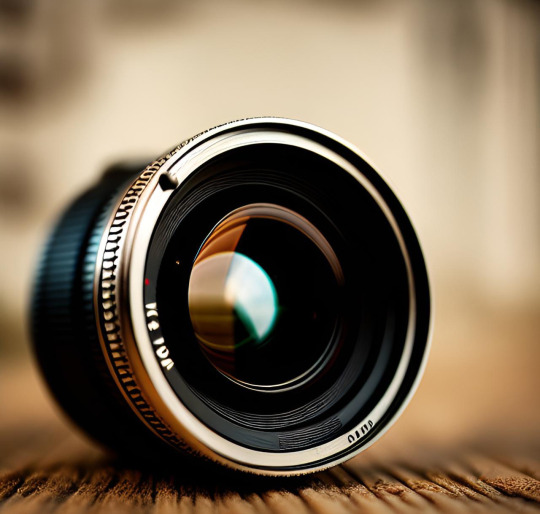
**Revival of Vintage Lenses: The Latest Trend in Digital Photography**
Welcome back to my digital photography blog! Today, we're diving into one of the most intriguing trends reshaping the photography landscape: the revival of vintage lenses. This trend blends the old with the new, offering photographers unique creative opportunities and distinctive visual styles. Let's explore why vintage lenses are making a comeback and how you can incorporate them into your photography toolkit.
### The Allure of Vintage Lenses
#### Unique Optical Characteristics
One of the primary reasons photographers are drawn to vintage lenses is their unique optical qualities. Unlike modern lenses, which are designed to minimize flaws and produce clinically sharp images, vintage lenses often have imperfections that add character to photos. These can include:
- **Soft Focus:** Many vintage lenses produce a softer image, particularly at wider apertures. This can give portraits a dreamy, ethereal quality.
- **Swirly Bokeh:** Certain vintage lenses, like the Helios 44-2, are famous for their distinctive bokeh patterns, which can add an artistic touch to backgrounds.
- **Chromatic Aberration:** While generally considered a flaw, chromatic aberration (color fringing) can sometimes enhance the aesthetic of an image, giving it a unique look that modern lenses typically avoid.
#### Build Quality and Aesthetic
Vintage lenses are often built with metal bodies and manual focus rings, providing a tactile shooting experience that many photographers find satisfying. The craftsmanship of these lenses is typically robust, and their classic design adds a nostalgic aesthetic to your camera setup.
### Adapting Vintage Lenses to Modern Cameras
#### Lens Mount Adapters
To use vintage lenses on modern digital cameras, you'll need a lens mount adapter. These adapters are readily available for most camera and lens combinations. Here’s how to choose the right adapter:
- **Compatibility:** Ensure the adapter matches both your lens mount and camera mount. Popular mounts include M42, Canon FD, and Nikon F for lenses, and Sony E, Canon EF, and Micro Four Thirds for cameras.
- **Quality:** Invest in a good-quality adapter to ensure a secure fit and to avoid light leaks. Brands like Fotodiox and Metabones are known for their reliable adapters.
Manual Focus and Exposure
Most vintage lenses are manual focus, which can be a learning curve for those used to autofocus. However, this can also be an advantage, as it encourages more deliberate and thoughtful composition. Many modern cameras have focus peaking and magnification features to assist with manual focusing.
Additionally, vintage lenses often lack electronic contacts, meaning you’ll need to adjust exposure settings manually. This includes setting the aperture on the lens and adjusting shutter speed and ISO on your camera.
Creative Benefits of Using Vintage Lenses
Enhanced Storytelling
The unique characteristics of vintage lenses can enhance storytelling by imparting a distinctive mood or atmosphere to your images. For instance, the soft focus and warm colour rendition of a vintage lens can evoke nostalgia or romance, making it perfect for portraiture and lifestyle photography.
Experimentation and Learning
Using vintage lenses can reinvigorate your creative process. The need to manually focus and set exposure slows down the shooting process, encouraging more thoughtful composition and a deeper understanding of photographic principles.
Cost-Effective Quality
Many high-quality vintage lenses are available at a fraction of the cost of modern equivalents. This allows photographers to expand their lens collection and experiment with different focal lengths and styles without breaking the bank.
Popular Vintage Lenses to Explore
- **Helios 44-2 58mm f/2:** Known for its swirly bokeh and sharp central focus, this Soviet-era lens is a favorite among portrait photographers.
- **Canon FD 50mm f/1.4:** This lens offers excellent sharpness and beautiful background blur, making it ideal for portraits and low-light photography.
- **Minolta Rokkor 58mm f/1.2:** Renowned for its build quality and pleasing bokeh, this lens is a great choice for those looking to experiment with shallow depth of field.
Conclusion
The revival of vintage lenses in digital photography is more than just a trend; it's a movement that celebrates the artistry and craftsmanship of past generations. By integrating these classic lenses into your modern workflow, you can achieve unique optical effects, enrich your creative process, and produce images with a distinctive charm that sets your work apart.
So, dig out that old lens from your attic or visit a second-hand camera store, grab an adapter, and start exploring the endless
creative possibilities that vintage lenses offer. Happy shooting!
#disabled artist#photographers on tumblr#art#digital art#landscape#artists on tumblr#my art#original art#photographer#adobe photoshop#art blog#blog#vintage#vintage photography#vintage lenses#informative#information#interesting#social#past#cameras#lightroom#nikonphotography#photography
0 notes
Text
We are all stocked up on every style of Madacide Disinfecting Germicidal Solutions at @truetattoosupply ! Keep those surfaces sterile with Madacide Wipes & Sprays that are now available at @truetubes and True Tattoo Supply! We have expanded @truetubes with a variety of new products that artists demand! We now carry MadaCide-FD, MadaCide-FDW-Plus Wipes and now gallons! #MadaCide is a hospital-level Disinfectant/Cleaner/Deodorizer that is designed specifically for the infection control needs of healthcare. Efficacy tests have demonstrated that this product is an effective bactericide, virucide, germicide, and fungicide.
It is formulated to disinfect hard, non-porous, inanimate, environmental surfaces, including chrome, glass, painted surfaces, plastics and stainless steel. It is ideal for use with most medical surfaces such as operating rooms, respiratory therapy equipment and medical instruments. Unique anti-corrosion formulation will not damage lenses, cement, plastics, rubber, steel, aluminum, brass or other metal when used as directed.
Kills Influenza A, HIV, Hepatitis B & C, TB, MRSA, VRE and SARS.
www.truetattoosupply.com
0 notes
Text
What Color Additives Are Approved For Food Coloring
Color additives refer to dyes, pigments, or other substances that are used to provide color to foods, cosmetics, or drugs to make them more appealing and attractive. They are important elements of various products, making them more appetizing and informative. They help people identify products more easily based on their added colors, such as medicine dosages, right-handed or left-handed contact lenses, and candy flavors. The U.S. Food and Drug Administration (FDA) regulates color additives and approves them for use on products while ensuring safety and regulation standards on top.
The use of synthetic food colors has dramatically increased with the growing demand of modern consumers for different flavors, colors, and tastes. You can find different synthetic food colors that are approved and used on different products in food & beverage, cosmetics, and pharmaceuticals. Well! In this article, we will walk you through the color additives that are approved and used for food coloring.
So, without any ado, let’s get into it!
What Are Food Additives?
Ingredients added to food are known as food additives, while the term refers to substances that can result or may reasonably lead to becoming a component or otherwise altering the characteristics of food. It includes all those substances used in processing, treating, producing, packaging, transportation, or storing food. Food additives are classified based on direct food additives and indirect food additives.
Direct Food Additives
These are food additives that are recognized on the ingredient label of foods and added for a specific purpose. For example, xanthan gum is a direct food additive used in bakery fillings, chocolate milk, salad dressings, etc.
Indirect Food Additives
The term "Indirect food additives" refers to substances that penetrate the food in trace amounts as a result of its handling, packaging, and storage. For instance, packaging materials may pass into the food as the food is stored.
Understanding Color Additives
Color additives are dyes, pigments, or substances which, when added or applied to food, drug, cosmetics, or the human body, provide color (individually or in combination with other ingredients). Foods containing color additives must be labeled accurately, contain only approved ingredients, and be safe to consume. The food industry is responsible for the regulation of all color additives that ensure they are safe to consume.
There are two categories of FDA-permitted colors: those that require certification and those that do not require certification. Before food coloring is approved for use in food, it must undergo stringent safety standards before being listed on the FDA's permitted list. The FDA considers several factors when assessing the safety of a new color additive, including the manufacturing process, composition & properties, the short and long-term effects of consumption, stability, consumption & exposures, and availability of analytical methods to determine purity and amount in food.
In addition, the FDA requires the use of batch-certified colors, also called certified colors or synthetic colors, to ensure color additives meet the required identity and specifications. The FDA analyzes the representative sample of each batch of color additives during batch certification.
FD&C Blue No. 1: For use in various applications, including frostings & icings, beverages, confections, frozen dairy desserts, popsicles, cereals, etc.
FD&C Blue No. 2: For use on baked goods, such as ice cream, yogurt, cereals, snack foods, etc.
FD&C Green No. 3: For use in a variety of applications, including ice cream, cereal, drinks, mixers, sherbet, and baked goods.
Orange B:
Strictly permitted for use in hot Dog and sausage casings.
Citrus Red No. 2: Permitted for use to color orange peels only.
FD&C Red No. 3: For use in ice cream cones, cereals, beverages, frostings & icings, confections, popsicles, frozen dairy desserts, etc.
FD&C Red No. 40: For use on dairy products, beverages, confections, cereal, puddings, and gelatins.
FD&C Yellow No. 5: For use on baked goods, beverages, snack foods, confections, yogurt, cereals, condiments, etc.
FD&C Yellow No. 6: For use on baked goods, gelatins, snack foods, beverages, crackers, dessert powders, cereals, sauces, etc.
In addition, the following listed color additives are approved for use in food.
Citrus Red No. 2
Annatto extract
Astaxanthin
Dehydrated beets (beet powder)
Ultramarine blue
Canthaxanthin
Caramel
ß-Apo-8'-carotenal
ß-Carotene
Cochineal extract; carmine
Sodium copper chlorophyllin
Toasted partially defatted cooked cottonseed flour
Ferrous gluconate
Ferrous lactate
Grape color extract
Grape skin extract (enocianina)
Haematococcus algae meal
Synthetic iron oxide
Fruit juice
Vegetable juice
Dried algae meal
Tagetes (Aztec marigold) meal and extract
Carrot oil
Corn endosperm oil
Paprika
Paprika oleoresin
Phaffia yeast
Riboflavin
Saffron
Titanium dioxide
Turmeric
Turmeric oleoresin
What To Look Further?
Food ingredients have been used for preserving, flavoring, blending, thickening, and coloring food for many years. These ingredients ensure that consumers can always find tasty, nutritious, safe, convenient, colorful, affordable, and convenient food to meet their needs. However, it has been proven that food ingredients reduce serious nutritional deficiencies in consumers. It is strictly regulated and monitored how food additives and colorants are used in the food industry.
Therefore, food ingredients must be tested for safety before being added to foods, as required or approved by federal regulations. As scientific understanding and testing methods improve, all additives are subject to an ongoing safety review. So, consumers should be confident that the foods they consume are safe.
Conclusion
Last but not least, color additives not subject to certification can be referred to as "artificial colors," "artificial colors added," or other terms that are equally informative without giving them individual names other than carmine/cochineal extract. The FDA requires that food manufacturers list all ingredients on their labels, with the most prevalent ingredients listed first, followed by less prevalent ingredients in descending order. For instance, FD&C Blue No. 1 or its abbreviated name Blue 1 must be listed on the label whenever the FDA-certified color additive is used in food.
On top of that, food manufacturers are highly recommended to buy synthetic food dyes or colors from reputed food color manufacturers and suppliers, which produces premium quality food colors following the FDA's international standards and regulations. If you are looking for top-quality food colors for your industrial applications or need more information about the range of food dyes or food colorants we produce at our manufacturing facility, please contact us today!
0 notes
Photo
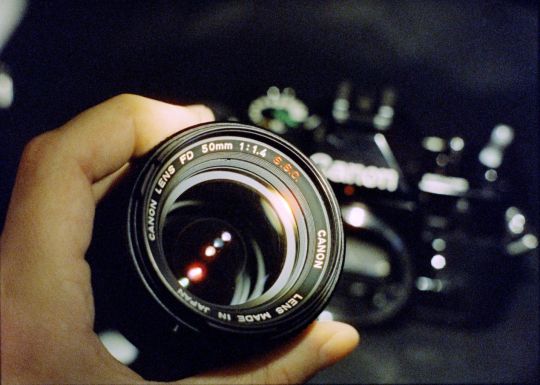
New on Analog.Cafe: "Canon FD 50mm 1:1.4 S.S.C. Lens Review: A Special Look; an Affordable Cult-Classic!" — Canon FD 50mm 𝒇1.4 S.S.C. are the second-generation breech-lock mount “normal” lenses for the popular Canon AE-1 35mm film SLRs and FD-mount cameras. Their glass renders distinct bokeh, has decent flare resistance, comes with plenty of contrast, and is quite sharp when stopped down. The S.S.C.-marked lenses are the relatively rare and typically cost more than the standard “new FD” (sometimes marked as nFD) 50mm 𝒇1.4 lenses. But not all S.S.C. lenses are “chrome nose.” — [ Click the link to read the full post. ]
1 note
·
View note
Note
Have a wonderful time and please share all of your opinions!
thank you, that's so nice - this was a really well run event (really, it was 2 events running back to back) with a ton of young and up and coming teams - with so many US teams there for the qualifiers, all the major schools in the US were represented-- WISA, MIDA, Novi, WASA, Florida, but there were teams from all over the country - US ice dance is pretty healthy.
then in the international comp, Carol Lane and IAM/O brought 10 teams. Lake Placid is less than 2 hours from Montreal, so usually there are a lot of IAM teams, but Gauthier/Thieren were the only ones this time. CPom were there to watch the FD. i don't have a good camera for shooting figure skating- the people who do this for real have giant foot long lenses, but if there's anything, i'll share here - thanks again!
0 notes
